

| A second tree top survey for the Hazel Pot Beetle July 2011 | ||
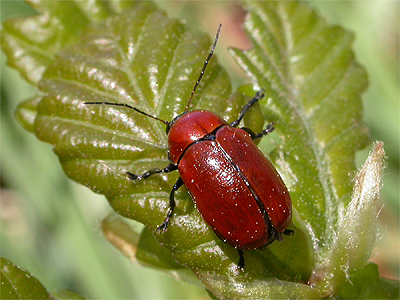 |
Following on from our
first, extremely successful and unique tree top survey
for the Hazel Pot Beetle (Cryptocephalus coryli)
earlier in May of this year, we were extremely fortunate
to be able to conduct a second survey in the same area at
the end of July. Though we knew 2011 to be an exceptionally early year for most invertebrates and that the survey date of July 30th would be a very late date by any standards for finding any C. coryli, the opportunity kindly offered to us by the late Bill Kew-Winder and Matt Vaughan of the former WKW Tree Services to conduct a second survey, was too good an opportunity for us to let pass by. |
|
| ... | ||
| It was decided that the survey would target pretty much anything. If any coryli turned up, so much the better, but it was always felt to be extremely doubtful before the survey, so we later took the opportunity to have a look around several of the ancient Oaks, with no real idea of what might be found. Though we hoped for the leaf mines of Phyllonorycter kuhlweiniella, in the end we found very little, although even a negative result for C. coryli was actually informative, even if only narrowing down or confirming the adults expected flight period by it not being there. | ||
| ... | ||
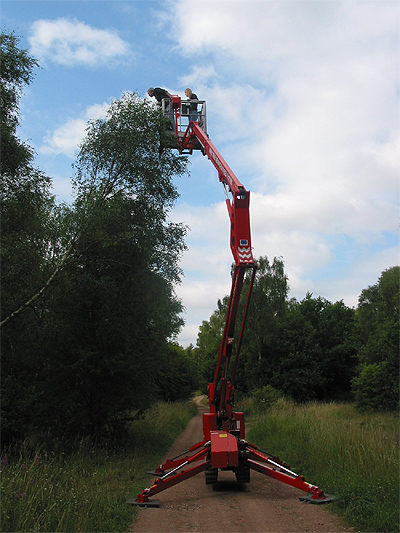 |
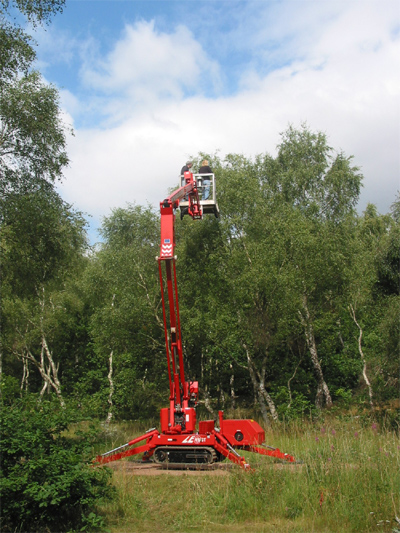 |
|
| ... | ||
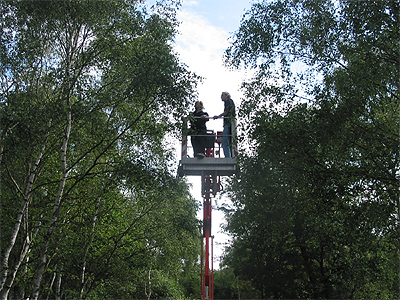 |
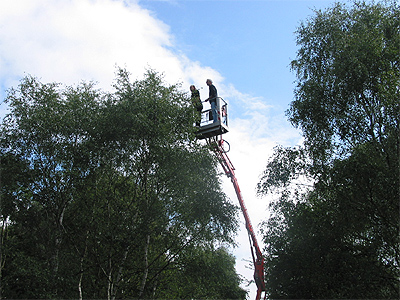 |
|
| ... | ||
| Our survey
took in all of the Birches on which adult beetles had
been found during the May survey. Conditions on the
morning were perfect for checking the tree top foliage
for C. coryli, with warm temperatures and no
wind. Leaf and tree movement was virtually nil, but
despite this, the only beetles we found were single
7-spot and Harlequin Ladybirds. We checked all suitable Birch foliage, beginning our survey from the main coryli area and then working our way round the southern edge of the plantation, but still drawing a complete blank. It was pleasing to see that many of the oldest Birches had managed to produce better foliage, than was present earlier in the year, rendering most Birches in the area as being potentially suitable food sources for adult coryli. Oaks growing underneath the light shade produced by Birches, had also produced a flush of growth and showed little effects of the frosts of early May. |
||
| ... | ||
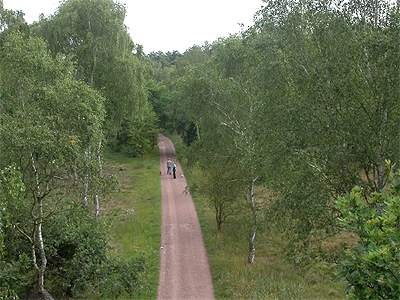 |
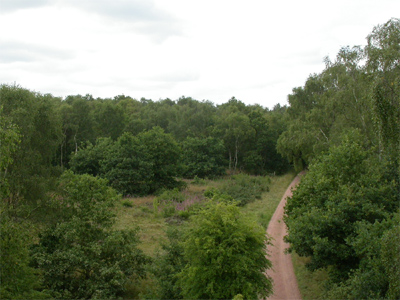 |
||||
| ... | |||||
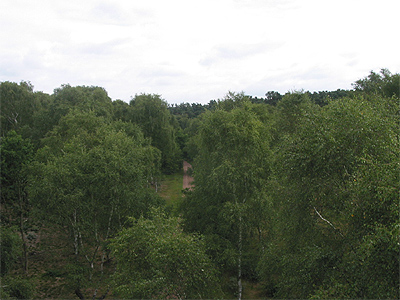 |
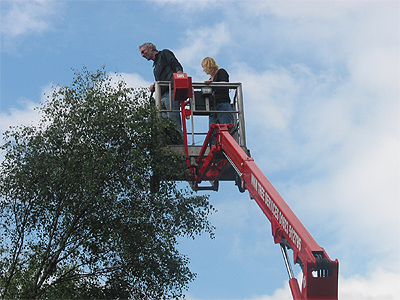 |
||||
| ... | |||||
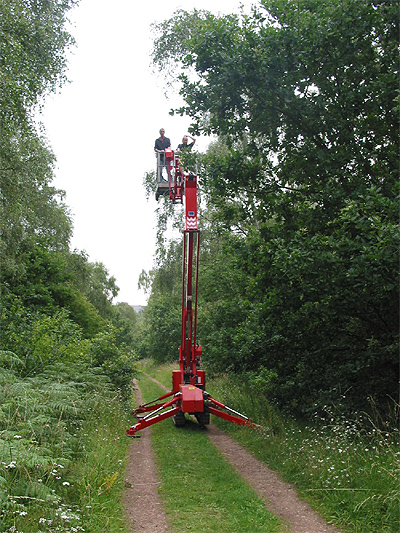 |
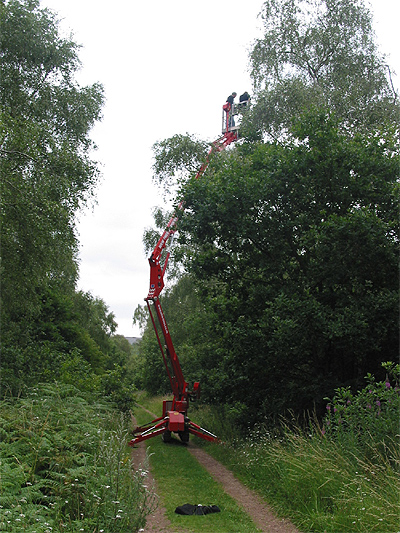 |
||||
| ... | |||||
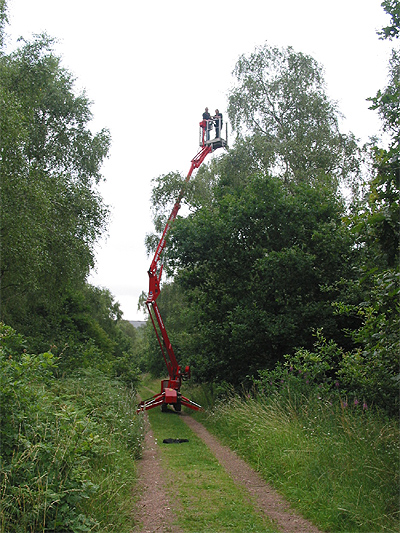 |
|
||||
| ... | |||||
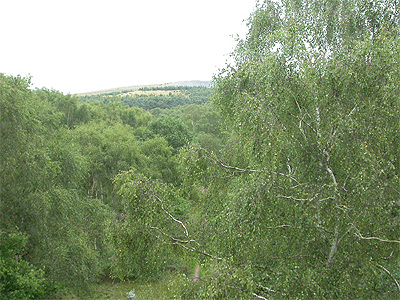 |
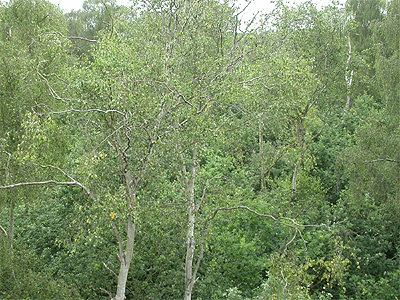 |
||||
| ... | |||||
| That Cryptocephalus
coryli is seemingly doing well here, does not mean
to say that any protection given or offered to it should
be lessened. This is still a beetle that needs help
through considerate habitat management if it is to
survive and although it successfully remained undetected
at low population levels for 70 years, this should not be
looked upon as being a reason to lessen any protection. The Gleadthorpe Open area itself, is an amazing area of habitat. Quite untouched as long as people can remember and present as an open area for as long as any local maps show, this small section of grass heathland is probably unique in Nottinghamshire as an area of undisturbed habitat. Notable for it's number of spiders, it is presently one of only two UK sites (both within the Sherwood NNR) for Zora sylvestris - a spider we often find where old heather grows over a well trodden footpath at the eastern end of the open. Quite amazing that this one area can hold two very rare inverts. |
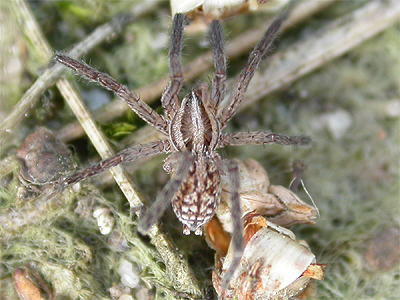 |
||||
| ... | |||||
| The following four photographs show the Gleadthorpe Open from a height of around 50 feet. The area of heather and stands of mature Birch in the top two photographs show the habitat of both Zora sylvestris and Cryptocephalus coryli. Matt and myself conducted a brief search for Z. sylvestris, around the heather in this area, whilst Bill and Dilys surveyed Birches along the southern edge of the plantation for C. coryli. The mature Birches shown in these photographs were not surveyed on this occasion. | |||||
| ... | |||||
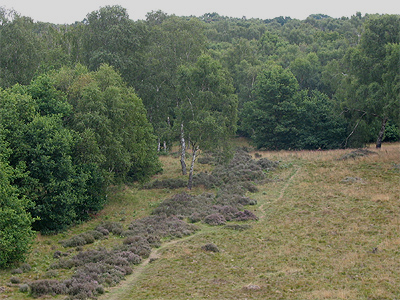 |
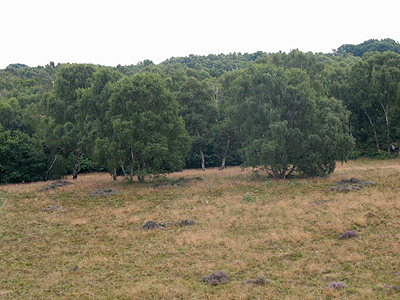 |
||||
| ... | |||||
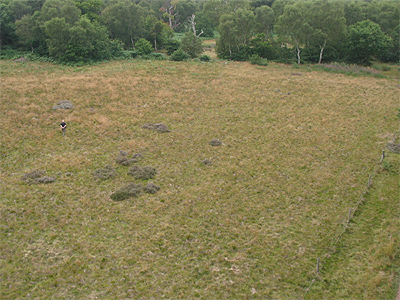 |
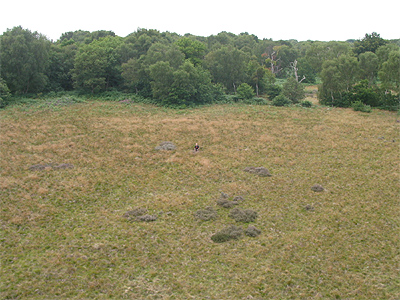 |
||||
| ... | |||||
| Following a break for lunch, we moved to another area of the forest to search the upper foliage of some of the ancient Oaks. They are impressive from the ground, but from height, these spectacular, huge monsters show great fragility and structural weaknesses less noticable from the ground. It was good to have the chance to view them like this, after some years of looking up at them, but it does make you wonder how most of these trees have remained upright for so long. | |||||
| ... | ||
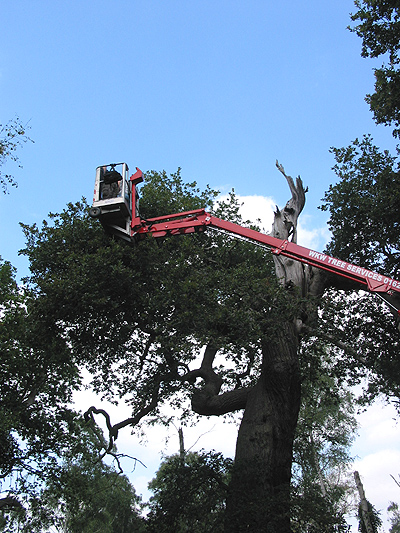 |
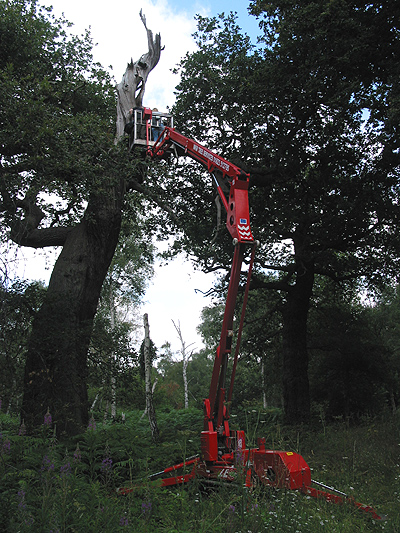 |
|
| ... | ||
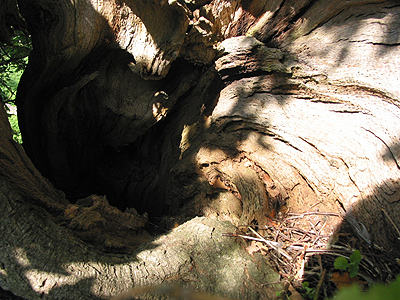 |
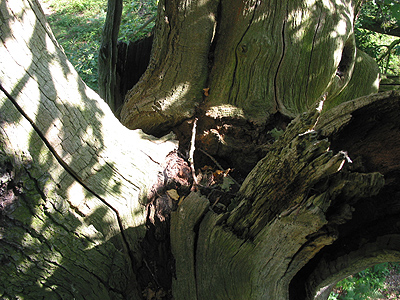 |
|
| ... | ||
| We found
evidence that they have suffered from the consequences of
a very dry Spring and Summer, usually in both leaf size
and quaility, but the effect of the heavy snow the
previous Winter, was plainly evident on some trees.
Certainly the three trees we looked at were all typically
hollow, more or less from top to bottom and these open
cracks and crevices obviously support many invertebrates,
most especially spiders, but the time of year meant that
little was found on this occasion. We searched only by sight and by hand, but it may be worth beating foliage given the opportunity on another date in Spring. Another useful collecting option would perhaps be to take samples of the accumulation of dead wood and material from the hollows and old Jackdaw nests to search for Pseudoscorpions, spiders and other invertebrates. |
||
| ... | ||
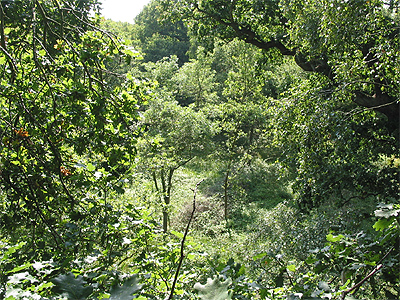 |
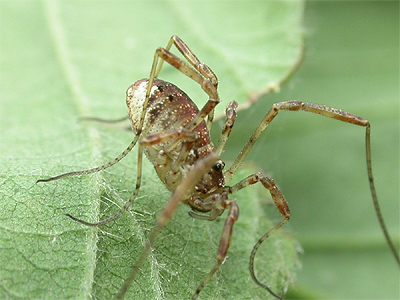 |
|
| ... | ||
| A number of Harvestmen found on both trunks and branches included the two common species Paraligolophus agrestis (above right) and Oligolophus tridens. We have found numbers of both these species on low vegetation over the years and it seemed very strange to find them 'out of context' but in general, very little was actually to be found within the canopy or on the main limbs. | ||
| ... | |||||
 |
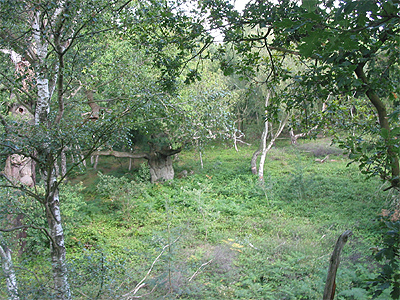 |
||||
| ... | |||||
|
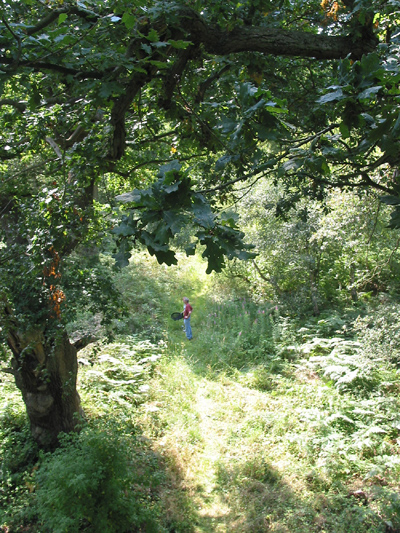 |
||||
| ... | |||||
| Our own previous experience when using the Yellow-legged Clearwing lure, has been of one or two moths an hour and with moths often being quite slow to appear, so our total was really quite exceptional. Dilys and Bill did most of the netting of these moths, with Bill developing an extremely good netting technique and dexterity by the end of the day. | |||||
| ... | |||||
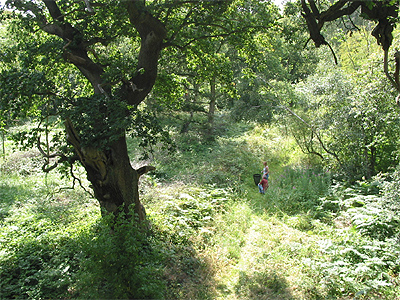 |
Despite the fact that we
actually found very little during the day, this was still
a very useful exercise and one which was once again, only
made possible by the kind generosity of Bill and Matt
from WKW
Tree Services for
generously giving their own free time, equipment and
enthusiasm, to help us carry out this second tree top
survey. The fact that we failed to record any Cryptocephalus coryli, was due to the late date in what has been a very early season. This in itself provides us with some useful information and helps narrow the adults flight period down from what we had originally believed. We both gained a great deal from Bill and Matt's willingness to answer our questions, freely sharing their expertise and knowledge gained through working with Sherwood's ancient Oaks. Hopefully they themselves learned something from us about Sherwoods range of invertebrates, although we think they already knew just what an exceptional place this is. |
|
| ... | ||